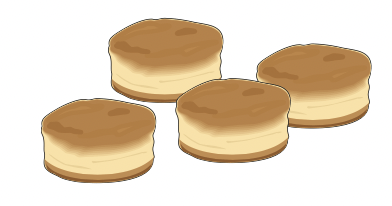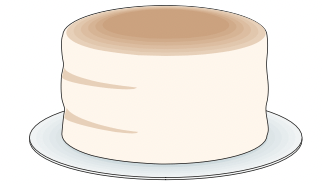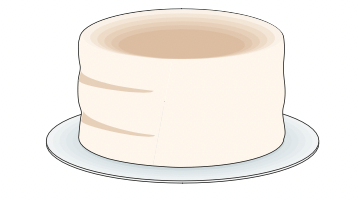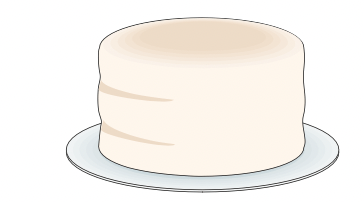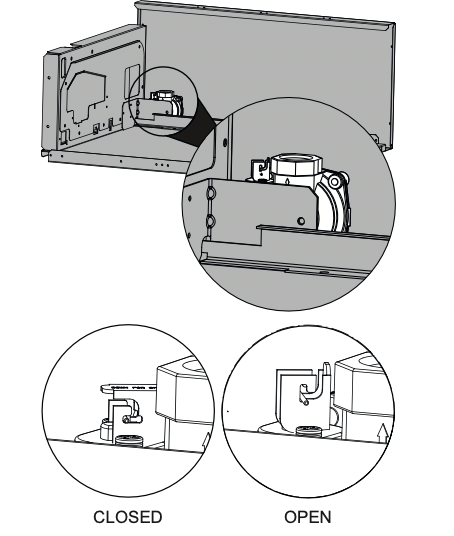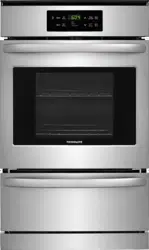Documents: Go to download!
User Manual
- User Manual - (English)
- Installation Instruction (spanish, French) - (English)
- Product Spec Sheet - (English)
Owner's Guide Wall Oven
COOKING RECOMMENDATIONS
Bakeware
The material of bakeware affects how evenly and quickly it transfers heat from the pan to the food.
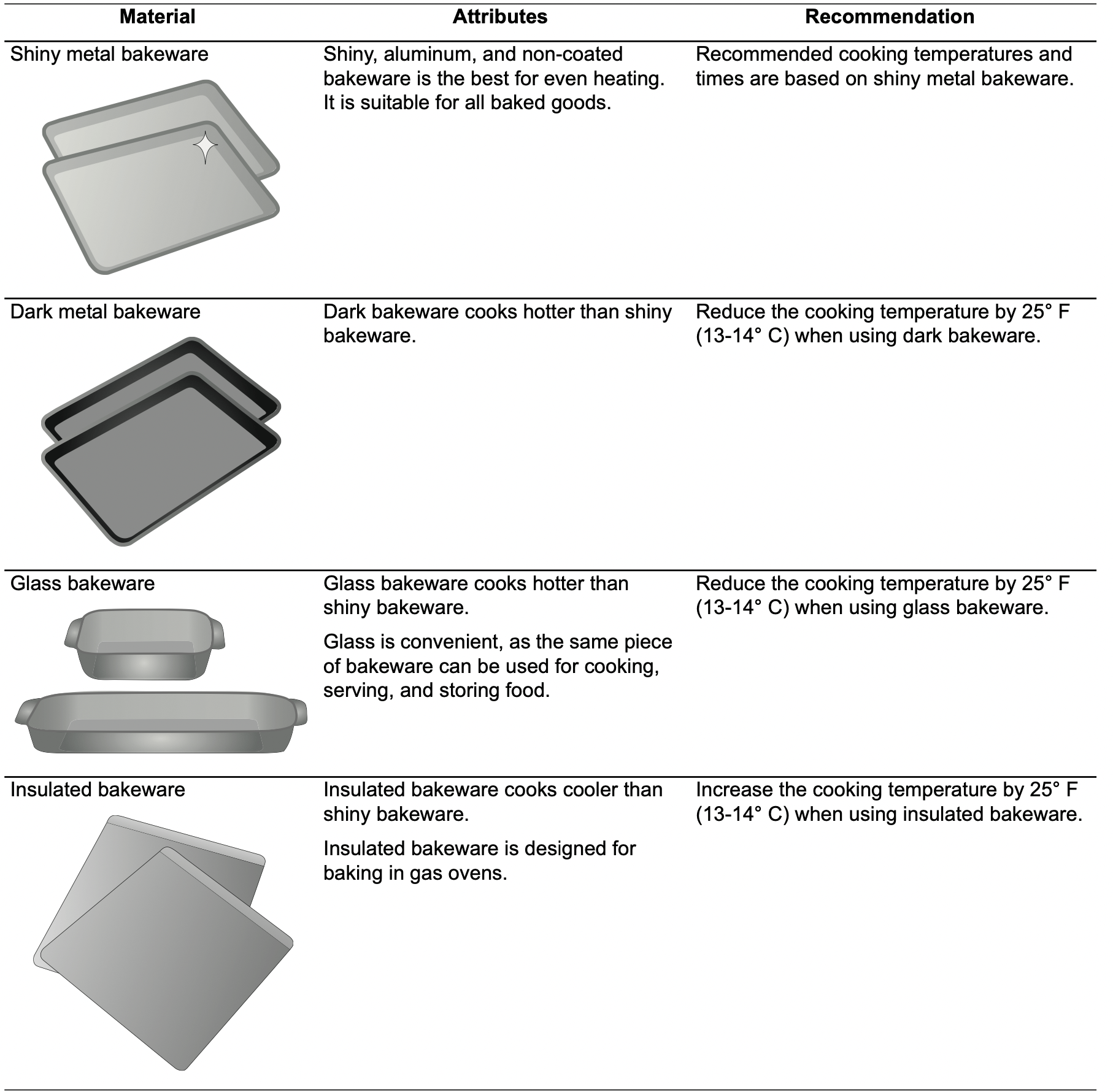
Cooking Conditions
Conditions in your kitchen can affect the performance of your appliance when cooking food.

Cooking Results
Small adjustments may fix a problem with food not being as done as you like or more done than you like.

Cooking Tips
Use these additional tips to get the best results from your appliance.


OVEN CONTROLS FUNCTIONS
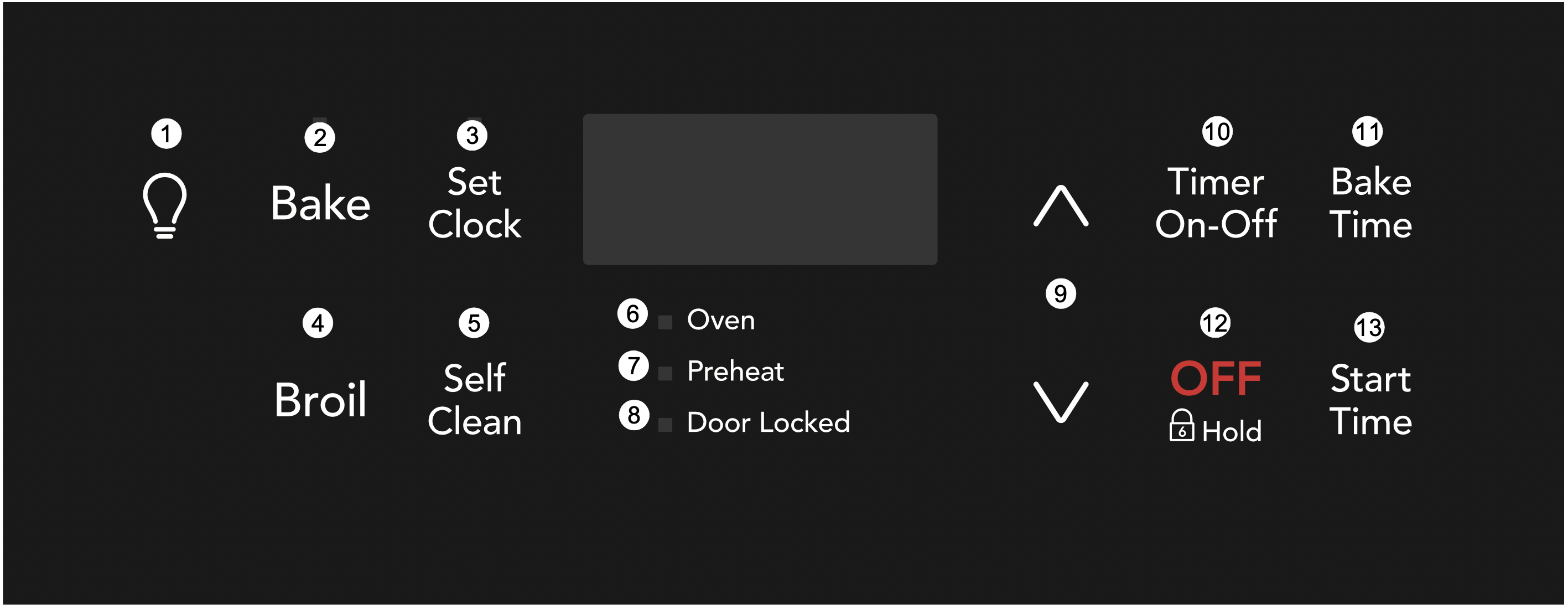
- Oven Light - Use to turn on internal oven light when checking on food.
- Bake - Use bake for cooking most foods at normal cooking temperatures.
- Set Clock - Use with up/down arrows to set the time of day.
- Broil - Use broil to cook foods that require direct exposure to radiant heat.
- Self Clean - Select self clean feature for 2,3 or 4 hours.
- Oven indicator light - The oven light will glow each time the oven turns on to maintain the set oven temperature.
- Preheat indicator light - The preheat light will glow when the oven is first set to operate, or if the desired temperature is reset higher than the actual oven temperature.
- Door Locked - The door locked light flashes when the oven door locks and unlocks, the oven door lockout is active, or when self clean is active.
- Up and Down arrows - Use with the feature or function pads to set oven temperature, bake time, start time, clean time (when programming an automatic start time), setting or adjusting the clock and minute timer.
- Timer on-off - Use to set or cancel the timer. The timer does not start or stop the cooking process. Timer on-off is used to set the continuous bake function.
- Bake Time - Use to set the baking time length.
- OFF - Use to clear any feature previously entered except the time of day and minute timer. Press OFF to stop cooking. Also use OFF to activate oven lockout feature.
- Start Time - Use to set the desired start time for baking and self clean. May be used with bake time to program a delayed timed bake.
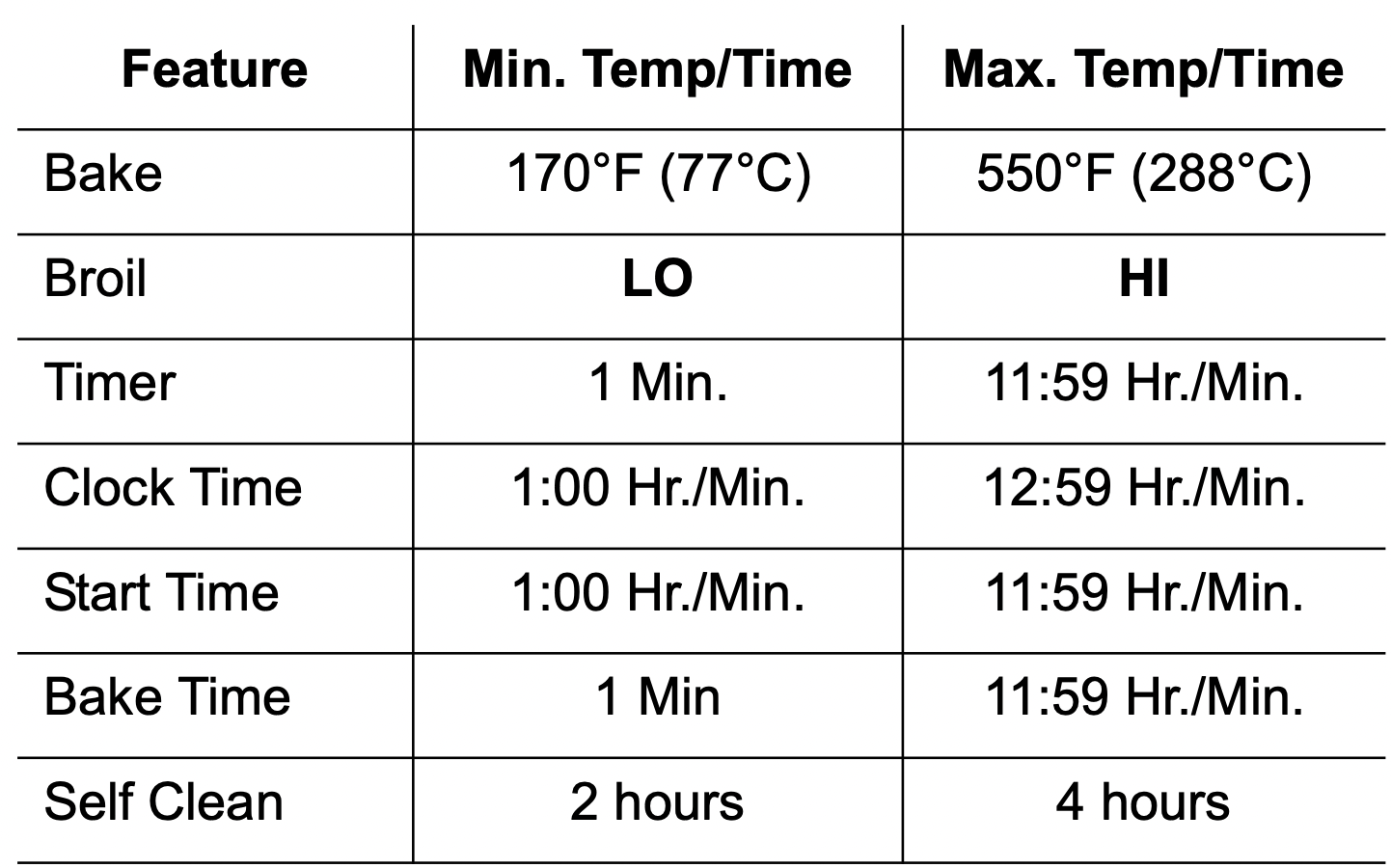
Setting the Clock
When the appliance is first plugged in or when the power supply to the appliance has been interrupted, the display will flash 12:00.
IMPORTANT: It is recommended to always set the clock for the correct time of day when power is applied to the appliance.
To set the clock:
- Press Set Clock once (do not hold clock key down).
- Within 5 seconds, press and hold the
 or
or  until the correct time of day appears in the display.
until the correct time of day appears in the display.
NOTE: The clock cannot be changed when the oven is set for cooking or self clean is active.
Changing Between Continuous Bake Setting or 12-Hour Energy Saving Feature
The oven control has a built-in 12-Hour Energy Saving feature that will shut off the oven if the oven is left on for more than 12 hours. The oven control can be programmed to override this feature for continuous baking.
To change to continuous bake:
- Press and hold timer on-off for 6 seconds until a tone sounds. The display will show — — hr for continuous cooking. The current time of day will return to the display.
- To cancel the continuous bake setting, press and hold timer on-off for 6 seconds until a tone sounds. The display will again show 12 hr, indicating that the control has returned to the 12-Hour Energy Saving feature.
Changing the Temperature Display (F or C)
The electronic oven control is set to display Fahrenheit (F) when shipped from the factory. The display may be set to show either Fahrenheit or Celsius (C) oven temperatures from 170°F to 550°F (77°C to 288°C).
To change the temperature display:
- Press broil. The display will show — —.
- Press and hold
 until HI appears in the display.
until HI appears in the display. - Press and hold broil until F or C appears in the display.
- Press
 or
or  to change to F or C.
to change to F or C. - Press any control key to return to normal operating mode.
Operating the Oven Light 
The oven light is located at the upper rear corner of the oven interior and is covered with a glass shield.
The shield must be in place whenever the oven is in use. The oven light will automatically turn on when the oven door is opened. Press the oven light icon located on the left side of the control panel to turn the oven light on whenever the oven door is closed.
For best results when baking, leave the oven light off.
To change the interior oven light, see “Replacing the Oven Light” on page 26.
Minute Timer
To set the minute timer:
- Press Timer on-off.
- Press
 to increase time in one minute increments.
to increase time in one minute increments.
Press and hold to increase time in 10 minute increments. The timer can be set for any amount of time from 1 minute to 11 hours and 59 minutes.
to increase time in 10 minute increments. The timer can be set for any amount of time from 1 minute to 11 hours and 59 minutes.
NOTE: If is pressed first, the timer will advance to 11 hours and 59 minutes. - When the set time ends, the timer will beep three times and will continue to beep three times every minute until timer on-off is pressed.
To change the minute timer while it is in use:
While the timer is active and shows in the display, press and hold the  or
or  to increase or decrease the time remaining.
to increase or decrease the time remaining.
To cancel the minute timer before set time expires: Press timer on-off once.
NOTE
- The indicator light located above the timer on-off key will glow while the minute timer is active.
- The minute timer displays hours and minutes until 1 hour remains on the timer. Less than 1 hour, the display counts down in minutes and seconds. With less than 1 minute, only seconds will display.
- The minute timer will not start or stop the cooking process. Use the minute timer alone or with any of the other oven features. If another feature is active when the minute timer is active, the minute timer will show in the display. To view information about other active features, press the key for that feature.
Setting oven lockout
The control can be programmed to lock the oven door and lockout the oven control keypad.
To set the oven lockout feature:
- Press OFF and hold for 6 seconds. Loc will appear in display, the door locked indicator light will flash, and the motor driven door lock will begin to close. Allow about 15 seconds for the oven door to lock. Once the oven door is locked, the current time of day will appear in the display.
- To cancel the Oven Lockout feature, press OFF and hold for 3 seconds. The control will unlock the oven door and resume normal operation.
NOTE: If any control key is pressed with the oven lockout feature active, Loc will appear in the display until the control key is released. But it does not disable the clock, kitchen timer, or the interior oven lights.
Setting Bake
The oven can be programmed to bake at any temperature from 170°F to 550°F (77°C to 288°C). The factory preset automatic bake temperature is 350°F (176°C).
CAUTION: Always use pot holders or oven mitts when using the oven. When cooking, the oven interior, exterior, and oven racks become very hot which can cause burns.
For best results:
- Fully preheat the oven before baking items like cookies, cakes, biscuits, or breads.
- Leave oven light off while baking.
- Use single rack for baking for best baking performance.
Rack position 3 is recommended as shown here:
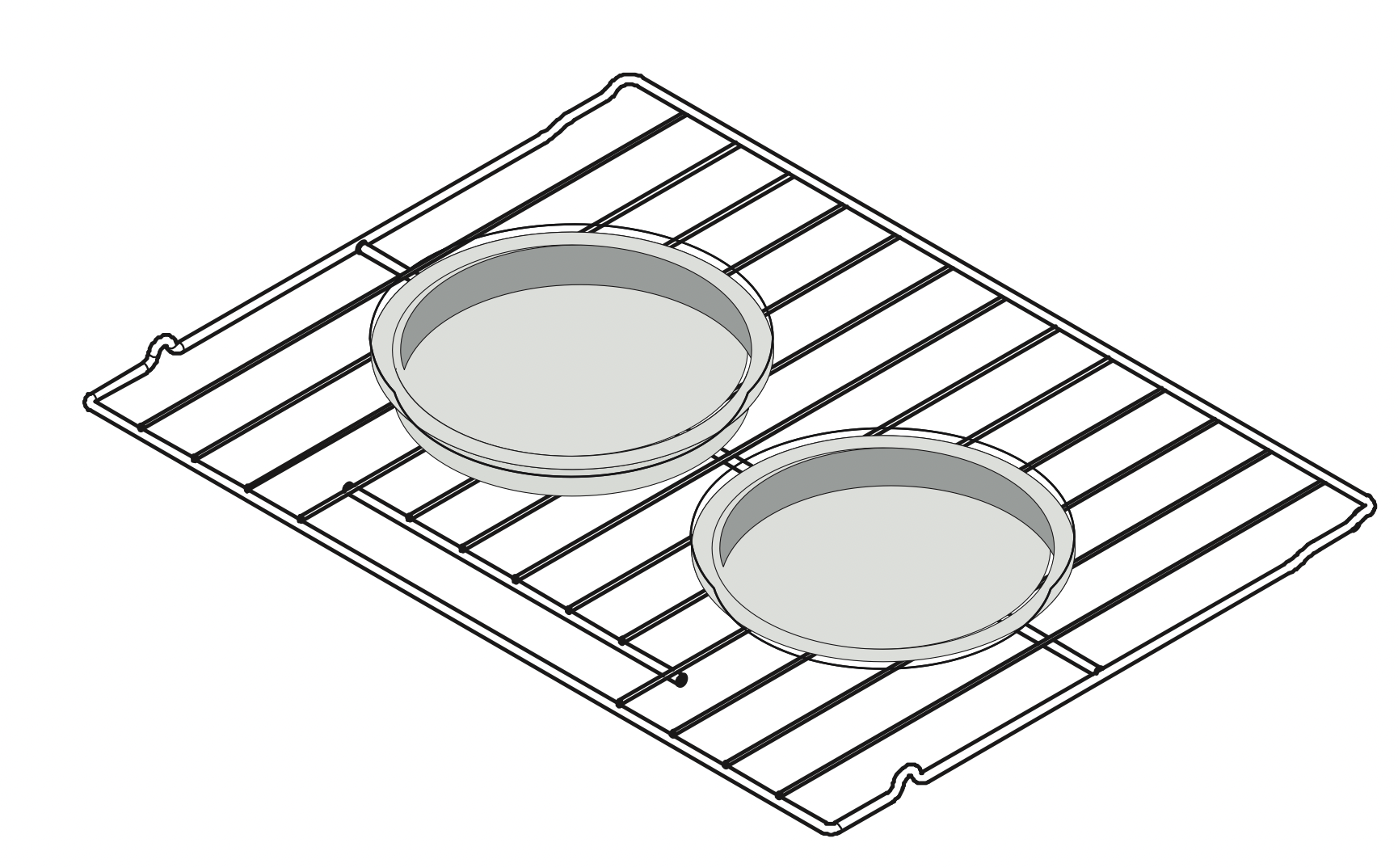
- When baking cakes using 2 racks, place bakeware on oven rack positions 3 and 5 and place the cake pans as shown. (See Figure 3)
- Use positions 3 and 5 when baking cookies on multiple pans.
- Allow 2 to 4 inches (5.1 cm to 10.2 cm) of space between bakeware to allow for proper air circulation.
- Dark or dull pans and glass absorb more heat than shiny bakeware resulting in dark or over browning of foods. It may be necessary to reduce the oven temperature or cook time to prevent over browning of some foods. Dark pans are recommended for pies. Shiny pans are recommended for cakes, cookies and muffins.
- Do not open the oven door too often. Doing so will reduce the temperature in the oven and increase cooking time.
To set bake:
- Press bake. The display will show — — —.
- Within 5 seconds, press
 or
or  . The display will show 350°F (176°C). The temperature can then be adjusted in 5°F (1°C) increments by pressing and holding the
. The display will show 350°F (176°C). The temperature can then be adjusted in 5°F (1°C) increments by pressing and holding the  or
or  .
. - When the key is released, the oven will begin heating to the selected temperature. When the displayed temperature reaches the set temperature, the preheat indicator light will turn off and the control will emit one long beep.
To change oven temperature after bake has started:
- Press bake.
- Press
 or
or  to increase or decrease to a new temperature. The oven indicator light on the electronic display will turn on and off when using the bake feature and during preheat. This is normal and indicates that the oven is cycling to maintain the selected baking temperature.
to increase or decrease to a new temperature. The oven indicator light on the electronic display will turn on and off when using the bake feature and during preheat. This is normal and indicates that the oven is cycling to maintain the selected baking temperature. - To cancel baking press OFF.
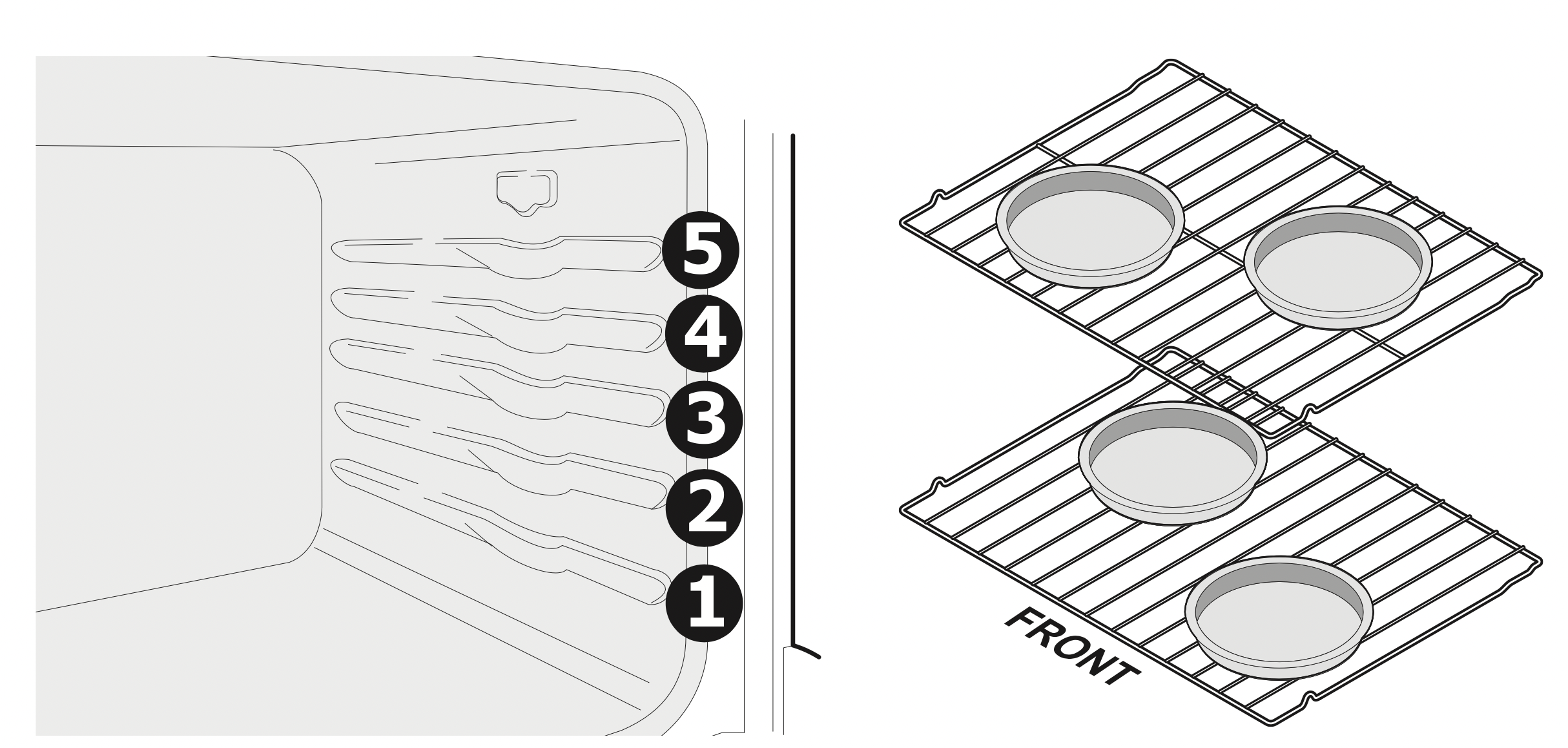
See other models: GLEB30S9DS FGHN2844LM LGGF3043KF FFCD2418UB FFTA1233Q2
Figure 3: Rack positions (L) and pan spacing (R)
Setting Bake Time
The Bake Time key sets the amount of time needed for baking. The oven will turn on immediately and stop automatically after the set bake time ends.
To program the oven to begin baking immediately and to shut off automatically (timed bake):
- Be sure the clock is set to the correct time of day.
- Place the food in the oven.
- Press Bake. — — — ° appears in the display.
- Within 5 seconds, press
 or
or  . The display will show 350°F (177°C). The temperature can then be adjusted in 5°F (1°C) increments,
. The display will show 350°F (177°C). The temperature can then be adjusted in 5°F (1°C) increments, - Press Bake Time.0:00 will appear in the display.
- Press
 or
or  until the desired baking time appears in the display. Relase the key.
until the desired baking time appears in the display. Relase the key. - The oven will turn on and begin heating.
When the set bake time runs out:
- End will appear in the display, and the oven will shut off automatically.
- The control will beep three times every 60 seconds as a reminder until OFF is pressed.
NOTE: Bake Time will not operate when using the broil feature.
Once the controls are set, the oven will come on and begin heating to the selected baking temperature. The oven temperature (or time of day) will show in the display.
Setting Start Time (delayed start)
Use the Start Time key to delay the starting time (delayed timed bake). The oven will turn on at a later time and stop automatically after the set bake time ends.
To program oven for a delayed start time and to shut-off automatically:
CAUTION: Food Poisoning Hazard. Do not let food sit for more than one hour before or after cooking. Doing so can result in food poisoning or sickness.
- Be sure that the clock displays the correct time of day.
- Place food in the oven.
- Press Bake. — — — ° appears in the display. Within 5 seconds, press
 or
or  . The display will show 350°F (177°C). The temperature can then be adjusted in 5°F (1°C) increments.
. The display will show 350°F (177°C). The temperature can then be adjusted in 5°F (1°C) increments. - Press Bake Time. 0:00 will appear in the display.
- Press
 or
or  until desired baking time appears.
until desired baking time appears. - Press Start Time. The time of day will appear in the display.
- Press
 or
or  until the desired start time appears in the display.
until the desired start time appears in the display. - Once the controls are set, the control calculates the time when baking will stop. The oven will turn on at the delayed start time and begin heating.
To change the oven temperature (or bake time) after baking has started:
- Press the function you want to change.
- Press
 or
or  to adjust the setting.
to adjust the setting.
NOTE: During a delayed timed bake, the preheat indicator light will not function until the set time to start cooking is reached.
Setting Broil
Use the broil feature to cook meats that require direct exposure to radiant heat for optimum browning results. Broiling will produce some smoke. If smoke is excessive, place food further away from the element. Watch food to prevent burning. When broiling always remember to arrange the oven racks while oven is still cool. Position the rack as suggested in “Suggested broil settings” page 19.
WARNING: Should an oven fire occur, close the oven door and turn the oven off. If the fire continues, use a Class B/C fire extinguisher. Do not put water or flour on the fire. Flour may be explosive.
CAUTION: Always use oven mitts. Oven racks will become very hot which can cause burns.
Broiling tips:
- If using broil pan and insert, place insert on broil pan.
Place on oven rack, preheat on broil HI for 10 minutes before placing food on insert. Broil with the oven door closed. - Always use the broiler pan with the insert when broiling.
It allows the dripping grease to be kept away from the high heat of the broil element. Do not use the pan without the insert. - Always pull the rack out to the stop position before turning or removing food.
- Do not cover the broil pan insert with aluminum foil. The exposed grease could catch fire. Do not use a roasting rack when broiling.
To set broil:
- Arrange the oven rack while oven is still cool.
- Press broil. The display will show — —.
- Press
 for HI broil or
for HI broil or  for LO broil. Most foods may be broiled at the HI broil setting.
for LO broil. Most foods may be broiled at the HI broil setting. - For optimum results, preheat pan using Broil Hi for 10 minutes before placing food on pan.
- Broil with oven door closed.
- Broil on one side until food is browned. Turn and broil food on the other side.
When broiling is finished press OFF.
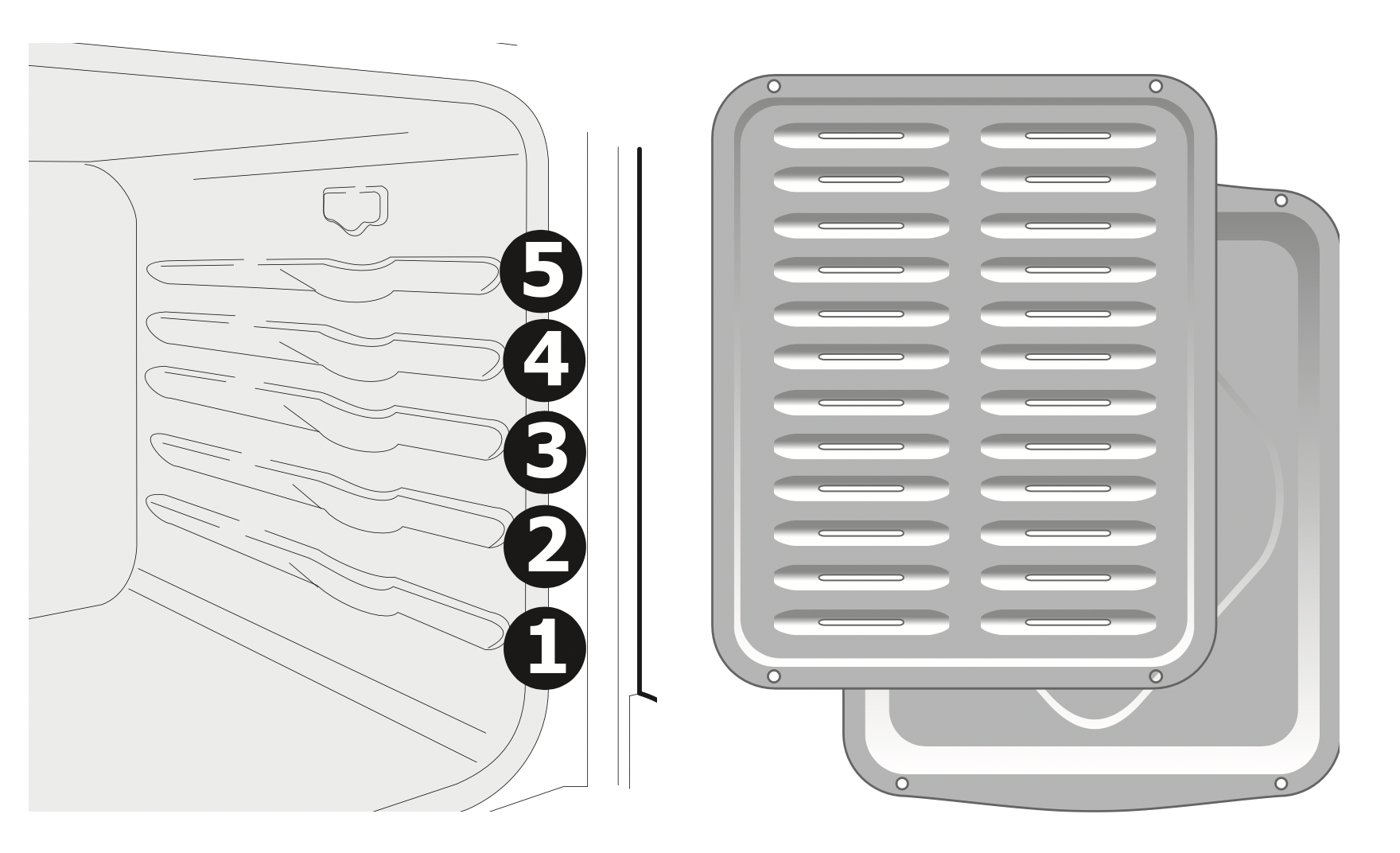
Figure 4: Rack positions (L) Broil pan and insert (R)
Table 1: Suggested broil settings
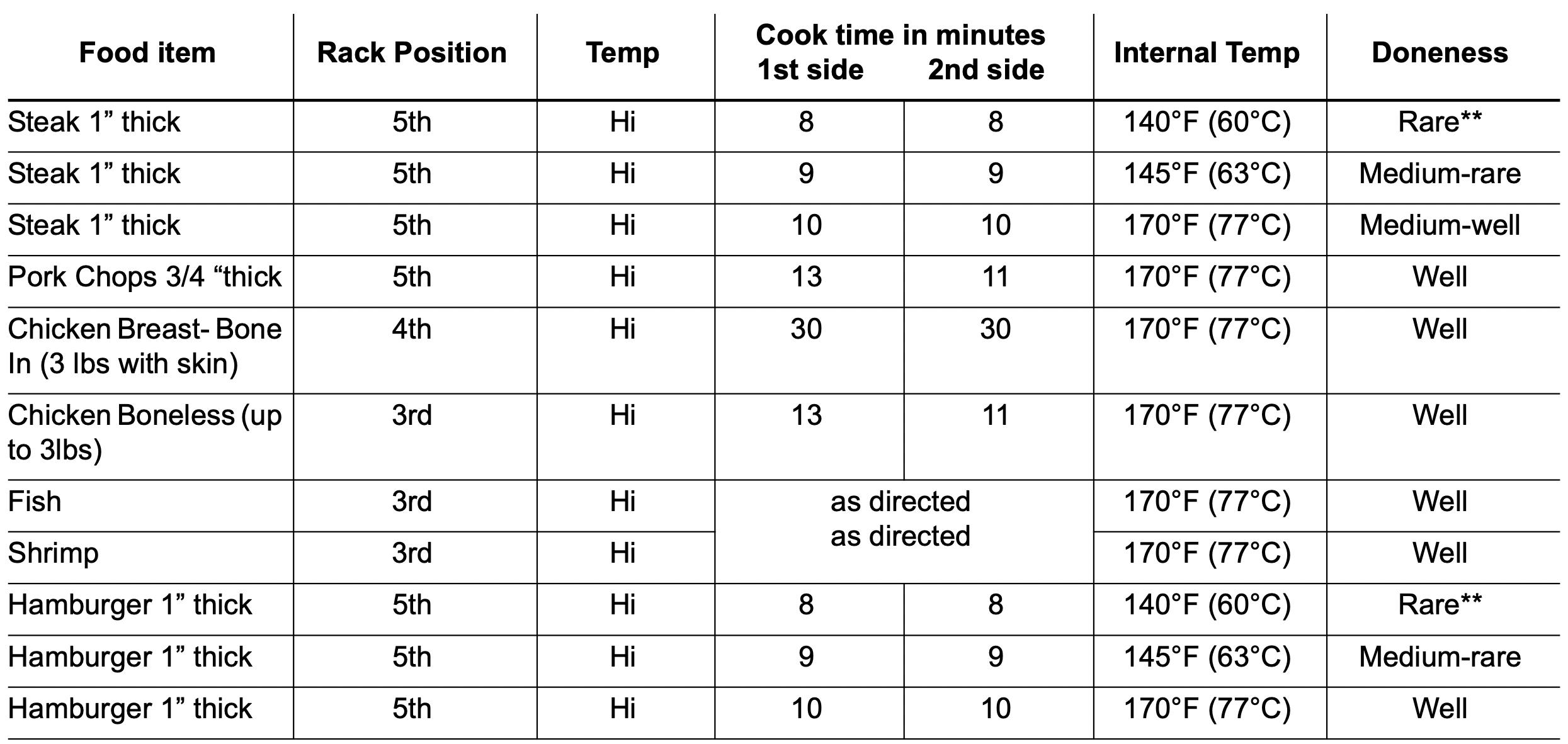
Self Clean
A self cleaning oven cleans itself with temperatures well above normal cooking temperatures which eliminate soils completely or reduces them to a fine powdered ash you can wipe away with a damp cloth.
While the oven is in operation, the oven heats to temperature much higher than those used in normal cooking. Sounds of metal expansion and contraction are normal. Oder is also normal because the food soil is being removed. Smoke may appear through the oven vent.
CAUTION:
During the self cleaning cycle, the outside of the range can become very hot to the touch. Do not leave small children unattended near the appliance.
The health of some birds is extremely sensitive to the fumes given off during the self cleaning cycle of any range. Move birds to another well-ventilated room.
Do not force the oven door open. This can damage the automatic door locking system. Use caution when opening the door after the self cleaning cycle is complete. The oven may still be very hot.
Do not line the oven walls, racks, bottom, or any other part of the range with aluminum foil. Doing so will destroy heat distribution, produce poor baking results, and cause permanent damage to the oven interior (aluminum foil will melt to the interior surface of the oven).
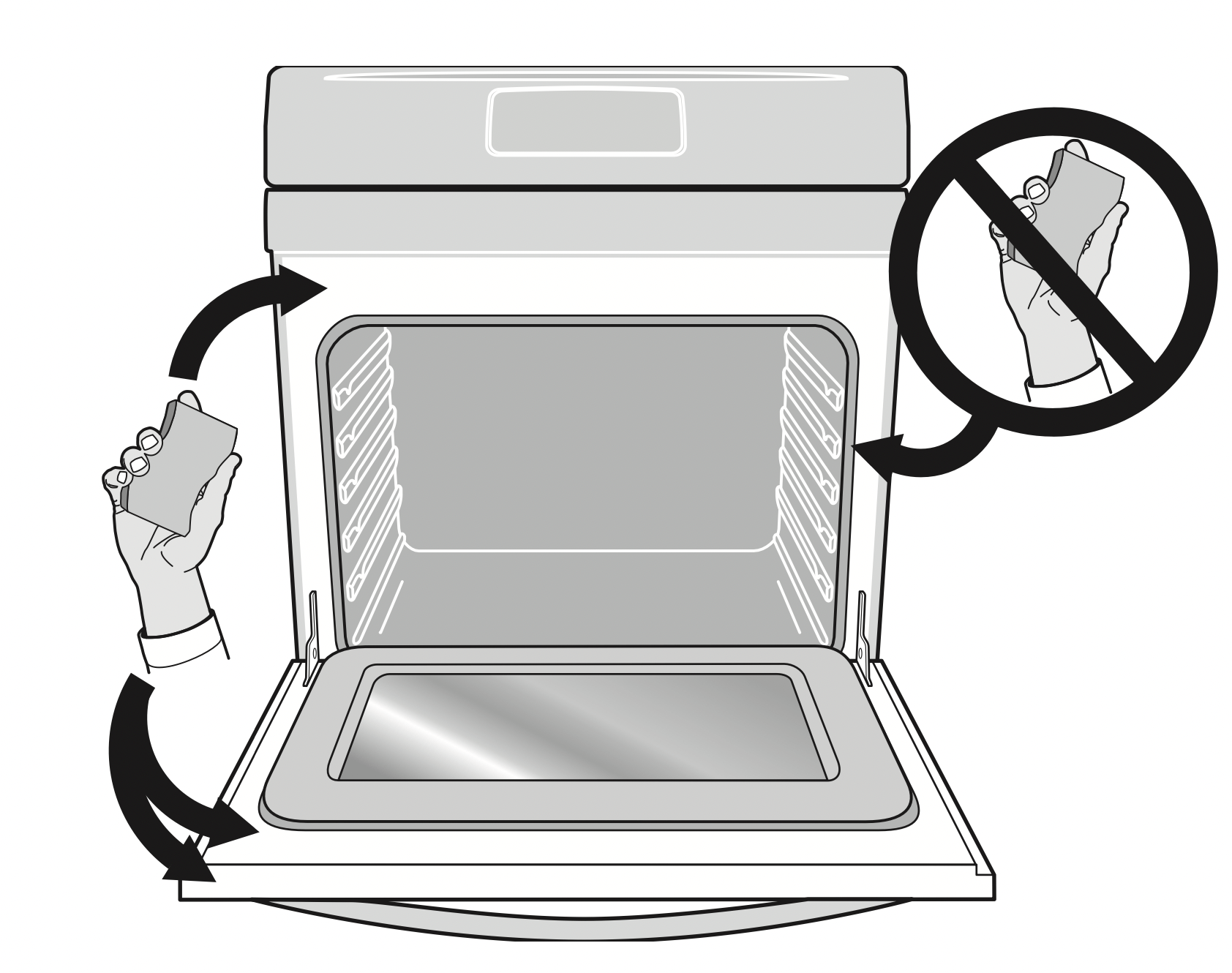
Figure 5: Clean around the oven door gasket
IMPORTANT
Adhere to the following self clean precautions:
- Do not use oven cleaners or oven protective coatings in or around any part of the oven interior.
- Do not clean the oven door gasket (Figure 5). The woven material of the oven door gasket is essential for a good seal. Care should be taken not to rub, damage, or remove the gasket.
- Do not use any cleaning materials on the oven door gasket. Doing so could cause damage.
- Remove the broiler pan and insert, all utensils, and any aluminum foil. These items cannot withstand high cleaning temperatures and will melt.
- Completely remove all oven racks and any accessories. If the oven racks are not removed, they will lose their special coating properties and no longer slide in and out of the oven cavity easily.
- Remove any excessive spills. Any spills on the oven bottom should be wiped-up and removed before starting the self cleaning cycle. To clean, use hot, soapy water and a cloth. Large spills can cause heavy smoke or fire when subjected to high temperatures.
- Do not allow food spills with a high sugar or acid content (such as milk, tomatoes, sauerkraut, fruit juices, or pie filling) to remain on the surface as they may leave a dull spot even after cleaning.
- Clean any soil from the oven frame, the door liner outside the oven door gasket, and the small area at the front center of the oven bottom. These areas heat sufficiently to burn soil on. Clean with soap and water. These areas are shown in white (Figure 5).
To set a self clean cycle or a delayed start self clean cycle:
- Be sure the clock displays the correct time of day.
IMPORTANT: To start a self clean cycle immediately without a delay, skip Step 2 and Step 3 in the instructions provided below. - Press Start Time. The: in the time of day will flash.
- Press and hold
 to scroll to the time to start the delayed self clean cycle. Release the key when the desired time is displayed.
to scroll to the time to start the delayed self clean cycle. Release the key when the desired time is displayed. - Press Self Clean. --- appears in the display.
- Press
 until 3:00 or 4:00 appears in the display for a 3 or 4 hour self clean process, or push
until 3:00 or 4:00 appears in the display for a 3 or 4 hour self clean process, or push  until 2:00 appears in the display for a 2 hour self clean process.
until 2:00 appears in the display for a 2 hour self clean process. - As soon as the controls are set, the motor driven lock will begin to close automatically and the door locked indicator light will flash. Do not open the oven door while the light is flashing (allow about 15 seconds for the oven door to lock).
- CLn will appear in the display during the self clean cycle, and the door locked light will glow until the self cleaning cycle is complete or cancelled and the oven temperature has cooled.
When the self clean cycle has completed:
- The time of day will appear in the display window, and the Self Clean indicator light and Door Locked light will continue to glow.
- Once the oven has cooled down for about 1 hour and the Door Locked light has gone out, the oven door may be opened.
- To avoid possible burns, use care when opening the oven door after the self cleaning cycle. Stand to the side of the oven when opening the door to allow hot air or steam to escape.
To stop or interrupt a self clean cycle (once it has been activated):
- Press OFF.
- Once the oven has cooled down for about 1 hour and the door locked light has turned off, the oven door can be opened.
- Restart the self clean cycle once all conditions have been corrected.
NOTE:
Whenever the self clean feature is active, you may check the amount of time remaining in the self clean cycle by pressing the clean key. Remember the range door cannot be opened until the range has cooled sufficiently. You will need to add about 1 hour to the time displayed before you can use the range for cooking.
When the oven is cool, wipe away any residue or powdered ash with a damp cloth or paper towel.
Adjusting the Oven Temperature
Your appliance has been factory calibrated and tested to ensure an accurate baking temperature. For the first few uses, follow your recipe times and temperature recommendations carefully. If you think the oven is cooking too hot or too cool for your recipe times, you can adjust the control so the oven cooks hotter or cooler than the temperature displayed.
Important: Do not use oven thermometers such as those found in grocery stores to check the temperature settings inside your oven. These oven thermometers may vary as much as 20ºF to 40ºF (11ºC to 23ºC) from actual temperatures.
- If at any time during the process of adjusting the oven temperature feature you decide not to make the change, press the OFF key once before the acceptance beep.
- The oven temperature adjustment feature cannot be modified if Bake or Broil is active.
- Oven temperature adjustments made will not affect the broil or self cleaning feature temperatures.
NOTE: If at any time during the process of adjusting the oven temperature feature you decide not to make the change, press the OFF key once before the acceptance beep.
To adjust oven temperature:
- Press bake while the oven is idle.
- Set the temperature to 550°F (288°C) by pressing and holding
 .
. - Within 3 seconds, press and hold bake until numeric digit(s) appear.
- Release bake. The display now indicates the amount of degrees offset between the original factory temperature setting and the current temperature setting. If the oven control has the original factory calibration, the display will read 0.
- The temperature can now be adjusted ±35°F (±19°C) in 5°F (1ºC) increments. Press and hold
 to adjust the temperature higher until the desired amount of offset appears in the display. When lowering the oven temperature press
to adjust the temperature higher until the desired amount of offset appears in the display. When lowering the oven temperature press  . A minus sign (-) will appear before the number to indicate that the oven will be cooler by the displayed amount of degrees.
. A minus sign (-) will appear before the number to indicate that the oven will be cooler by the displayed amount of degrees. - When you have made the desired adjustment, press OFF to return to the time of day display.
CARE AND CLEANING
Remove spills and any heavy soiling as soon as possible. Regular cleaning will reduce the difficulty of major cleaning later.
CAUTION
- Before cleaning any part of the appliance, be sure all controls are turned off and the appliance is cool.
- If ammonia or appliance cleaners are used, they must be removed and the appliance must be thoroughly rinsed before operating. Follow manufacturer's instructions and provide adequate ventilation.

Figure 6: Use cleaners with caution
|
Surface or Area |
Cleaning Recommendation |
|---|---|
|
Aluminum and vinyl |
Using a soft cloth, clean with mild dish detergent and water. Rinse with clean water, dry and polish with a soft, clean cloth. |
|
Painted and plastic control knobs |
Using a soft cloth, clean with mild dish detergent and water or a 50/50 solution of vinegar and water. Rinse with clean water, dry and polish with a soft, clean cloth. Glass cleaners may be used, but do not apply directly to surface; spray onto cloth and wipe. |
| Control panel |
Using a soft cloth, clean with mild dish detergent and water or a 50/50 solution of vinegar and water. Do not spray liquids directly on the oven control and display area. Do not use large amounts of water on the control panel - excess water on the control area may cause damage to the appliance. Do not use other liquid cleaners, abrasive cleaners, scouring pads, or paper towels - they will damage the finish. |
| Control knobs |
Using a soft cloth, clean with mild dish detergent and water or a 50/50 solution of vinegar and water. To remove control knobs: turn to the OFF position, grasp firmly, and pull off the shaft. To replace knobs after cleaning, line up the OFF markings and push the knobs into place. |
| Stainless Steel |
Using a soft cloth, clean with mild dish detergent and water or a 50/50 solution of vinegar and water. Rinse with clean water, dry with a soft clean cloth. Do not use cleaners containing abrasives, chlorides, chlorine, or ammonia. |
|
Smudge Proof™ Stainless Steel Black Stainless Steel |
Using a soft cloth, clean with mild dish detergent and water or a 50/50 solution of vinegar and water. Rinse with clean water, dry with a soft clean cloth. Do not use appliance cleaner, stainless steel cleaner, or cleaner containing abrasives, chlorides, chlorine, or ammonia. These cleaners may damage the finish. |
|
Porcelain-enameled broiler pan and insert Porcelain door liner Porcelain body parts |
Rinse with clean water and a damp cloth. Scrub gently with a soapy, non-abrasive scouring pad to remove most spots. Rinse with a 50/50 solution of clean water and ammonia. If necessary, cover difficult spots with an ammonia-soaked paper towel for 30 to 40 minutes. Rinse and wipe dry with a clean cloth. Remove all cleaners or future heating could damage the porcelain. Do not allow food spills with a high sugar or acid content (milk, tomatoes, sauerkraut, fruit juices or pie filling) to remain on porcelain surfaces. These spills may cause a dull spot even after cleaning. |
|
Self-cleaning oven interior |
Before setting a self-clean cycle, clean soils from the oven frame, areas outside the oven door gasket, and the small area at the front center of the oven bottom. See “Self Clean” on page 19. |
| Oven door |
Use mild dish detergent and water or a 50/50 solution of vinegar and water to clean the top, sides, and front of the oven door. Rinse well. Glass cleaner may be used on the outside glass of the door. Ceramic smoothtop cleaner or polish may be used on the interior door glass. Do not immerse the door in water. Do not spray or allow water or cleaners to enter the door vents. Do not use oven cleaners, cleaning powders, or any harsh abrasive cleaning materials on the outside of the oven door. Do not clean the oven door gasket. The oven door gasket is made of a woven material which is essential for a good seal. Do not rub, damage, or remove this gasket. |
General Cleaning
Refer to the table at the beginning of this chapter for more information about cleaning specific parts of the range.
CAUTION
Before manually cleaning any part of the range, be sure all controls are turned off and the range is cool. The range may be hot and can cause burns.
Ammonia must be rinsed before operating the oven. Provide adequate ventilation.
Boiler Pan Cleaning Tips:
- To prevent grease from baking on, remove the broiler pan from the oven as soon as cooking is completed. Use oven mitts because the broiler pan is extremely hot. Pour off grease. Soak the pan in hot, soapy water.
- Clean the broiler pan as soon as possible after each use. If necessary, use soap-filled steel wool pads. Heavy scouring may scratch the grid.
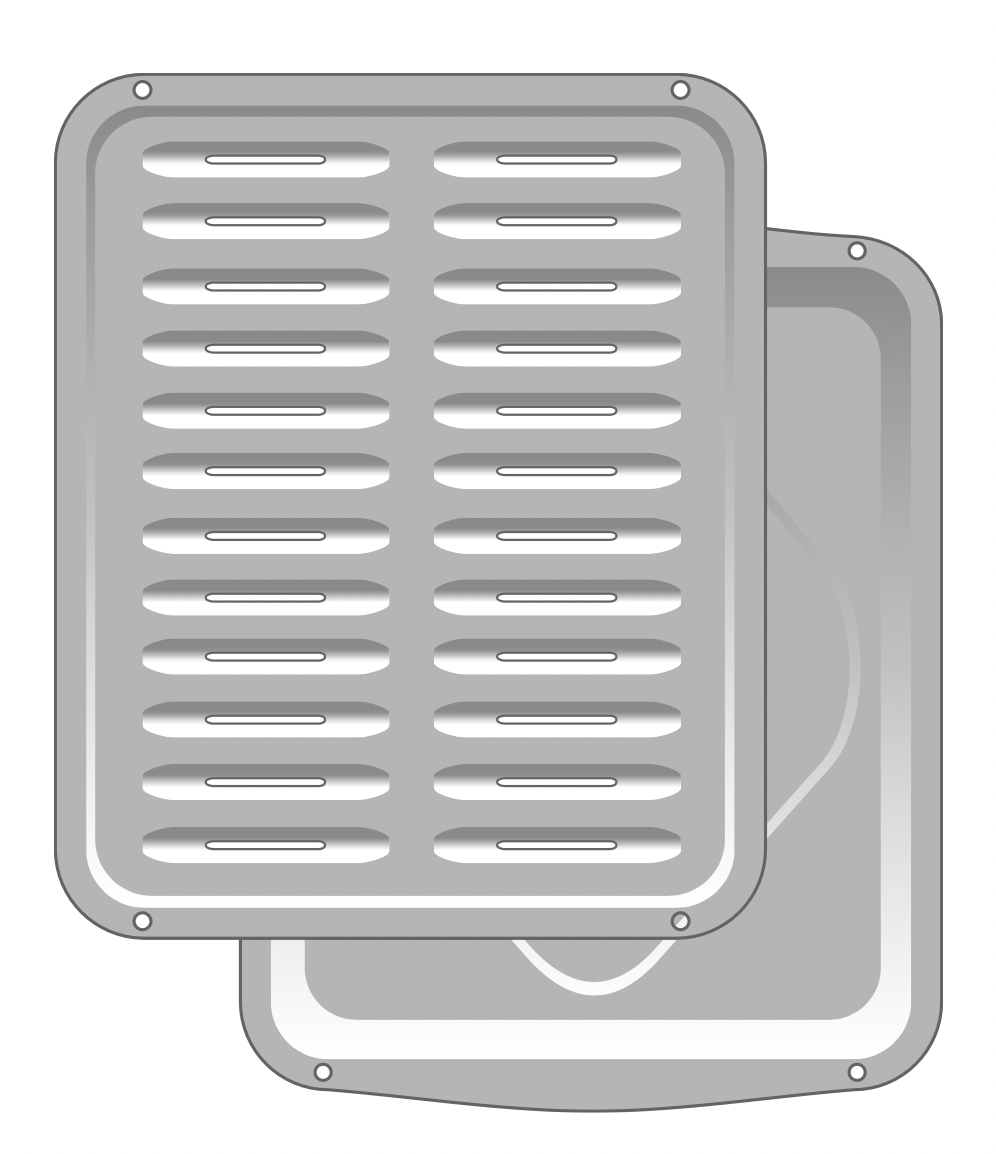
Figure 7: Boiler pan with insert
Aluminum Foil, Aluminum Utensils, and Oven Liners
WARNING: Never cover any slots, holes, or passages in the oven bottom or cover an entire oven rack with aluminum foil or any other materials. Doing so blocks air flow through the oven and may cause carbon monoxide poisoning.
CAUTION
- Protective liners—Do not use aluminum foil or any other materials to line walls, or the oven bottom. The high heat of the oven can melt these materials to the oven cavity and ruin the oven. These types of materials can also reduce the effectiveness of the air circulation in the oven and produce poor baking results. Only use aluminum foil as recommended in this manual. Improper installation of these liners may result in risk of electric shock or fire.
- Aluminum utensils - The melting point of aluminum is much lower than that of other metals. Care must be taken when aluminum pots or pans are used.
- Oven racks - Do not use aluminum foil to cover the oven racks. Using a liner in the oven restricts the heat and air flow needed to obtain the best possible cooking results for any oven.
Adhere to the following precautions when using spray oven cleaners:
- Do not spray cleaner on the electrical controls or switches. Doing so could cause a short circuit and result in sparking or fire.
- Do not spray any cleaner on the oven door trim or gasket, broiler drawer glides, handles or any exterior surfaces of the range, plastic or painted surfaces. The cleaner can damage these surfaces.
Replacing the Oven Light
The interior oven lights are located at the rear of the oven cavity and are covered with a glass shield. The glass shield must be in place whenever the oven is in use (See Figure 8).
To replace the oven interior light bulb:
CAUTION: Be sure the oven is unplugged and all parts are cool before replacing oven light.
- Turn electrical power off at the main source or unplug the appliance.
- Remove interior oven light shield by turning a quarter turn counter-clockwise.
- Replace bulb with a new T-4 type Halogen 25 watt appliance bulb.
NOTE: Do not allow your fingers to touch the new bulb when replacing. This will shorten the life of the bulb. Use a paper towel or cotton glove while handling the new bulb when installing. - Replace glass oven light shield by rotating clockwise.
- Turn power back on again at the main source (or plug the appliance back in).
- Be sure to reset the time of day on the clock

Figure 8: Wall oven Halogen light
Remove and replace storage drawer
Use the storage drawer for storing cooking utensils. The drawer can be removed to facilitate cleaning under the range. Use care when handling the drawer.
To remove the drawer:
Pull empty drawer out until it stops.
Tilt up the front of the drawer up and pull it out over the glide stop.
To replace the drawer:
Insert the back of the drawer into the opening.
Lift up the drawer and line up the drawer supports with the rails. Make sure to clear the glide stop.
Push in the drawer until it stops.
Removing and Replacing the Oven Door
To remove oven door:
CAUTION: The door is heavy. For safe, temporary storage, lay the door flat with the inside of the door facing down.
- Open oven door completely, horizontal with floor (See Figure 9).
- Pull the door hinge locks on both left and right door hinges down from the oven frame completely towards the oven door (See Figure 10). A tool such as a small flat-blade screwdriver may be required.
- Firmly grasp both sides of oven door along the door sides. Do not use the oven door handle (See Figure 11).
- Close the door to approximately 10 degrees from the door frame (See Figure 11).
- Lift the oven door hinge arms over the roller pins located on each side of the oven frame (See Figure 12).
To replace oven door:
- Firmly grasp both sides of oven door along the door sides. Do not use the oven door handle (See Figure 11).
- Holding the oven door at the same angle as the removal position, seat the hook of the hinge arm over the roller pins located on each side of the oven door frame (See Figure 11 and Figure 12). The hook of the hinge arms must be fully seated onto the roller pins.
- Fully open the oven door, horizontal with floor (See Figure 9).
- Push the door hinge locks up towards and into the oven frame on both left and right oven door hinges to the locked position (See Figure 10).
- Close the oven door.
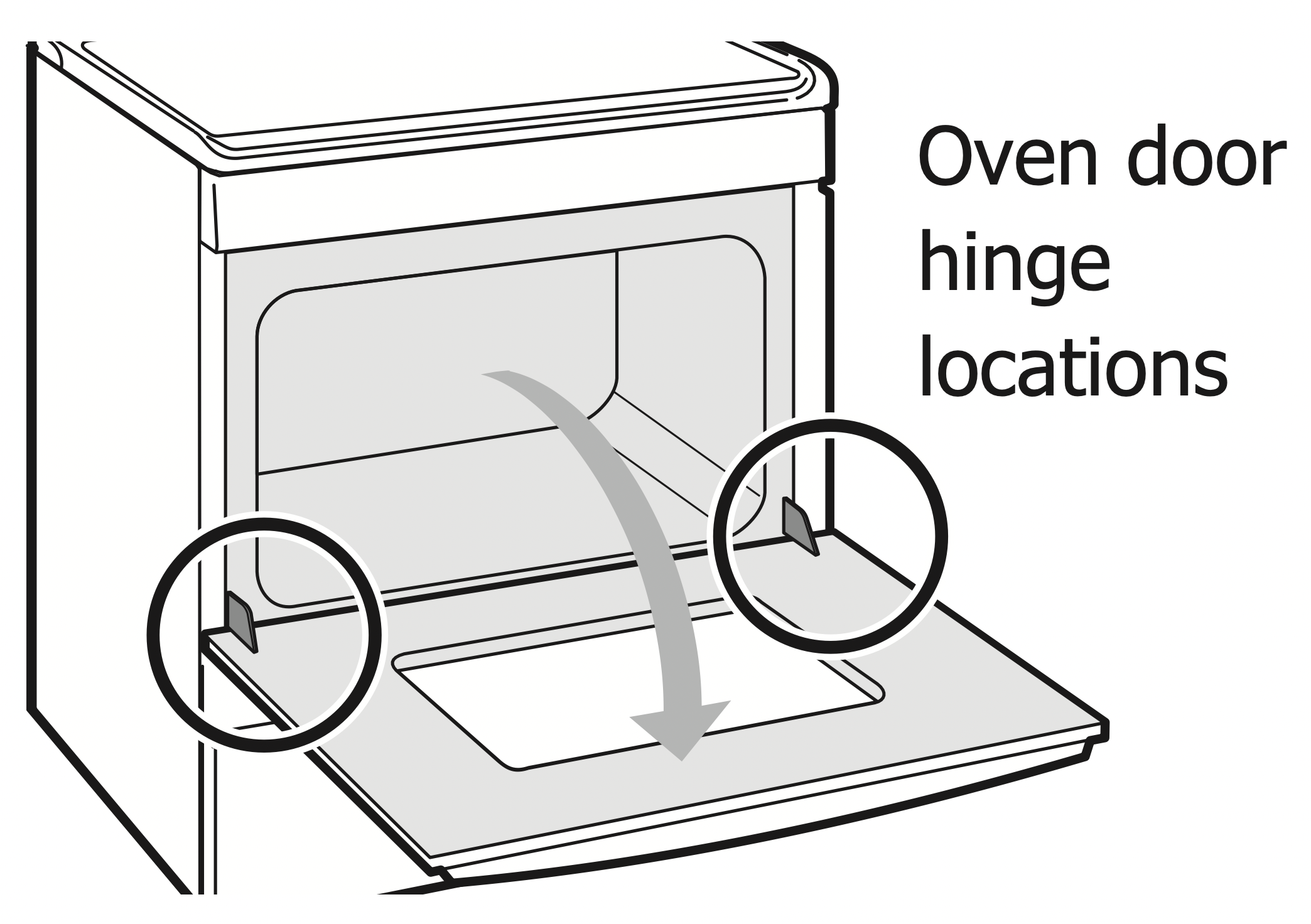
Figure 9: Door hinge location
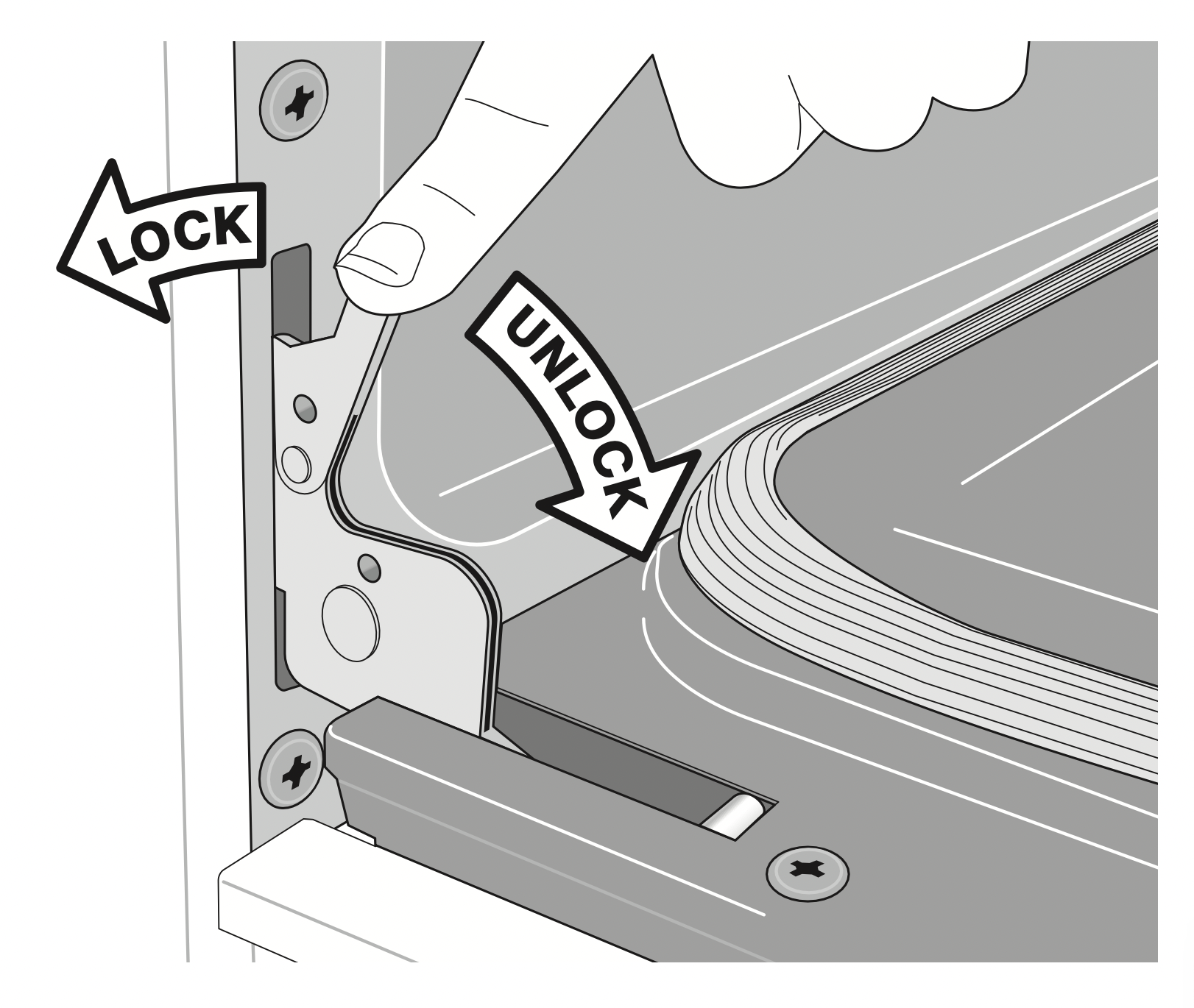
Figure 10: Door hinge locks
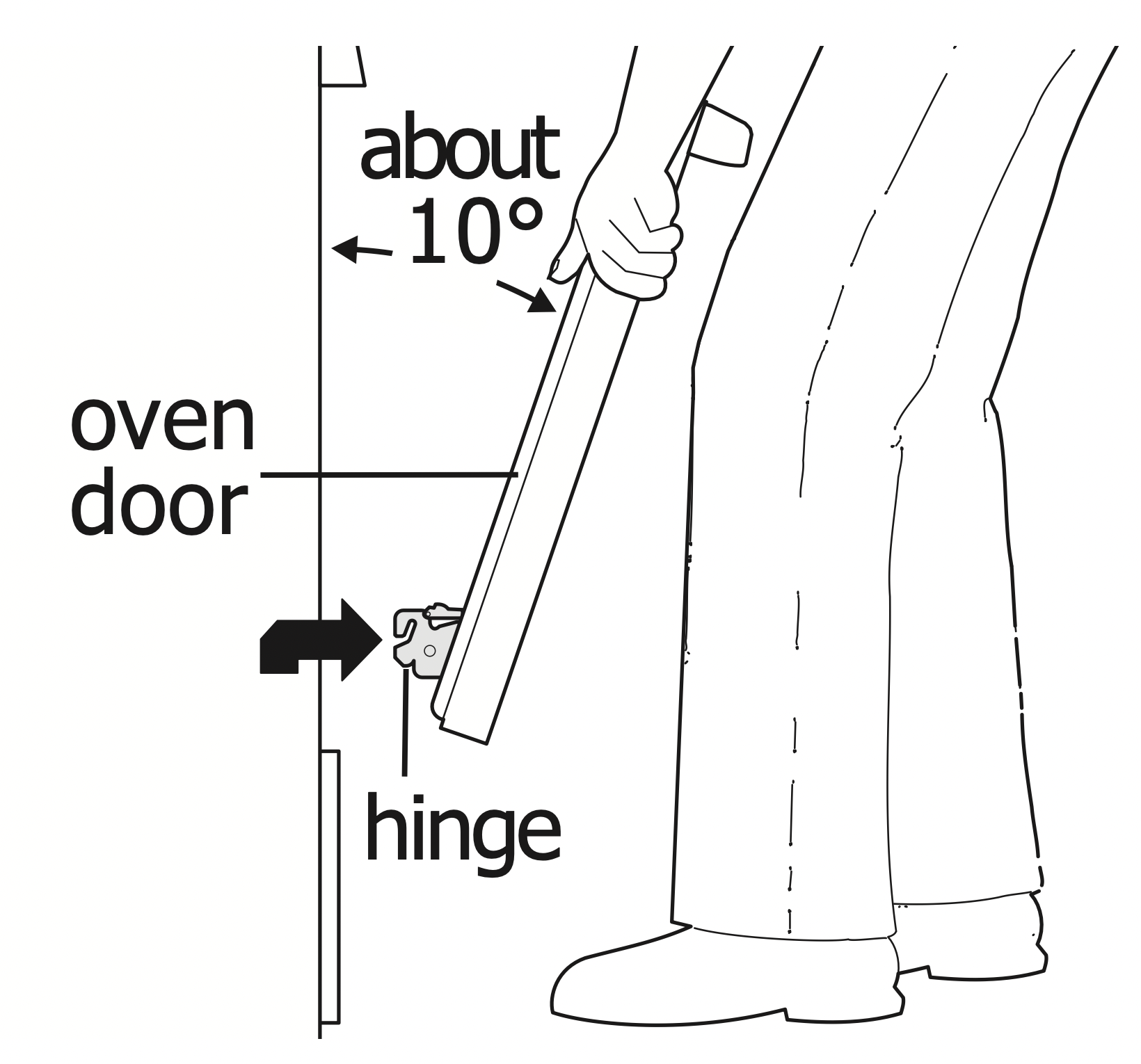
Figure 11: Holding door for removal

Figure 12: Replacement and location of hinge arm and roller pin
IMPORTANT: Special door care instructions - Most oven doors contain glass that can break. Do not hit the glass with pots, pans, or any other object. Scratching, hitting, jarring, or stressing the glass may weaken its structure, causing an increased risk of breakage at a later time. Do not close the oven door until all of the oven racks are fully in place.
TROUBLESHOOTING
Solutions to Common Baking Problems
For best cooking results, heat the oven before baking cookies, breads, cakes, pies or pastries, etc. There is no need to preheat the oven for roasting meat or baking casseroles.
The cooking times and temperatures needed to bake a product may vary slightly from your previously owned appliance.
Baking Problems and Solutions Chart
| Baking Problems |
Causes |
Corrections |
|---|---|---|
|
Cookies and biscuits burn on the bottom.
|
|
|
|
Cakes too dark on top or bottom.
|
|
|
|
Cakes not done in center.
|
|
|
|
Cakes not level.
|
|
|
|
Foods not done when cooking time is over.
|
|
|
Solutions to Common Problems
Before you call for service, review the following list. It may save you time and expense. Possible solutions are provided with the problem listed:
| Problem |
Solution |
|---|---|
| Oven control panel beeps and displays error codes |
|
| Poor baking results |
|
| Appliance is not level |
|
|
Cannot move appliance easily |
|
| Appliance does not operate |
|
| Flames inside oven or smoking from oven vent |
|
| Oven does not operate. |
|
| Oven smokes excessively when broiling. |
|
| Oven light does not work. |
|
